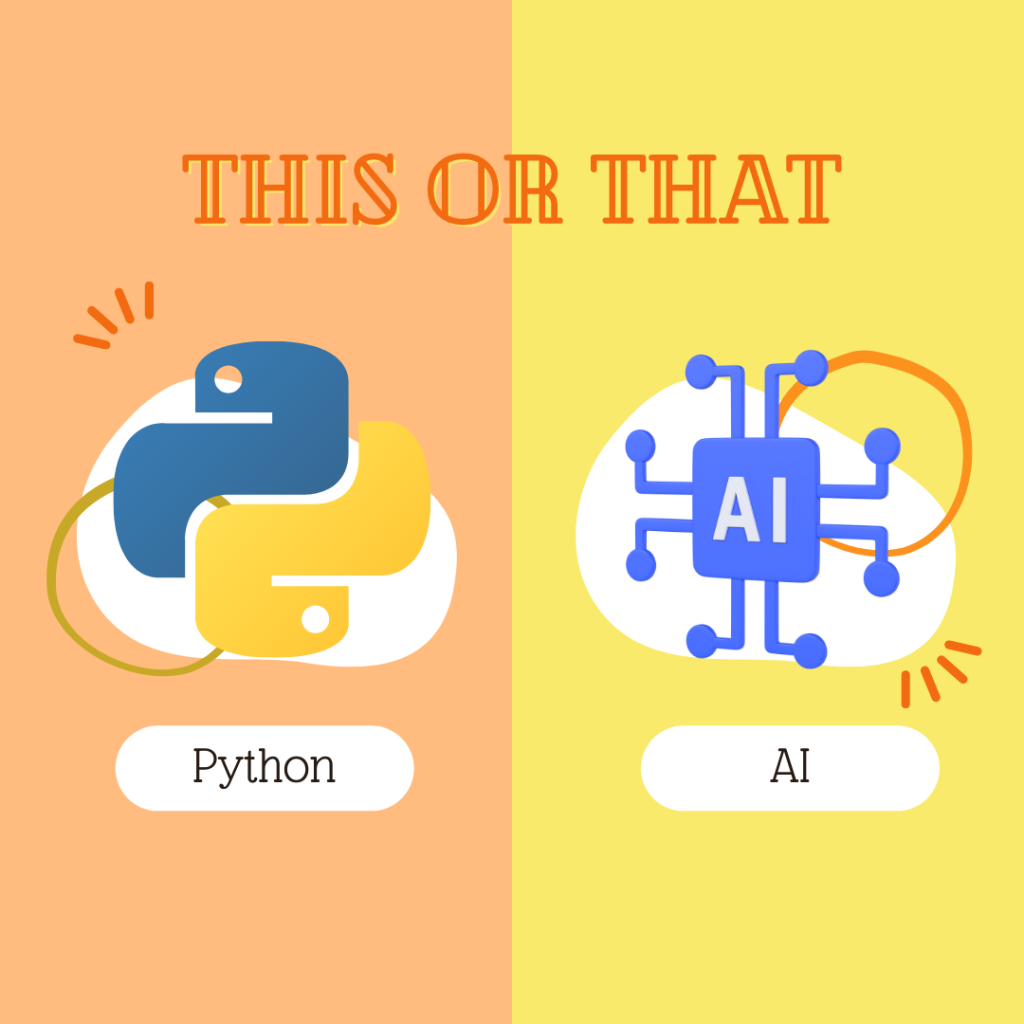Python and Artificial Intelligence (AI) are two distinct yet interrelated concepts that have gained immense popularity in the tech world. Python, a versatile programming language, has become the go-to choice for various applications, including AI development. However, it’s essential to understand that Python and AI serve different purposes and cannot be directly compared. In this blog, we’ll explore the key differences between Python and AI, their respective roles, and how they work together to revolutionize the world of technology.

- Python: The Versatile Programming Language
Python is a high-level, general-purpose programming language known for its simplicity, readability, and ease of use. Developed in the late 1980s, Python has grown into one of the most popular languages due to its vast standard library, extensive third-party packages, and community support. It is widely used for web development, data analysis, automation, scripting, and more. Python’s versatility and flexibility make it an excellent choice for developers across various domains. - Artificial Intelligence: The Realm of Intelligent Machines
Artificial Intelligence, on the other hand, is a broader concept that encompasses the development of intelligent machines that can mimic human intelligence and perform tasks requiring cognitive abilities. AI involves creating algorithms and models that allow machines to learn from data, recognize patterns, make decisions, and even engage in natural language processing and speech recognition. AI has applications in a wide range of fields, including robotics, healthcare, finance, and gaming.
The Relationship between Python and AI:
- Python as a Preferred Language for AI:
Python’s simplicity, ease of learning, and rich libraries have made it one of the most favored languages for AI and machine learning development. Libraries like TensorFlow, Keras, PyTorch, and scikit-learn provide powerful tools for building and deploying AI models. Python’s clean syntax and extensive community support have accelerated the development of AI applications, making it a natural choice for data scientists and AI engineers. - AI as an Application of Python:
Artificial Intelligence is an application domain that harnesses the capabilities of Python to create intelligent systems. Python provides the infrastructure and tools needed to implement various AI algorithms, including neural networks, decision trees, support vector machines, and more. Through Python, developers can manipulate and analyze vast amounts of data, a critical component for training and refining AI models.
Conclusion:
In conclusion, it is not appropriate to compare Python with Artificial Intelligence, as they are not comparable entities. Python is a versatile programming language that can be used for various tasks across multiple domains, including AI development. On the other hand, Artificial Intelligence is a vast field encompassing the creation of intelligent systems capable of mimicking human-like cognitive abilities.
The synergy between Python and AI is evident in the extensive use of Python for building AI models and implementing various AI algorithms. Python’s user-friendly nature and powerful libraries have contributed significantly to the rapid growth of the AI domain.
Whether you are a developer seeking a versatile programming language or an AI enthusiast venturing into the realm of intelligent machines, Python and Artificial Intelligence have something to offer. Embracing Python as a tool for AI development opens doors to innovative applications that can revolutionize the way we interact with technology and shape the future of artificial intelligence.